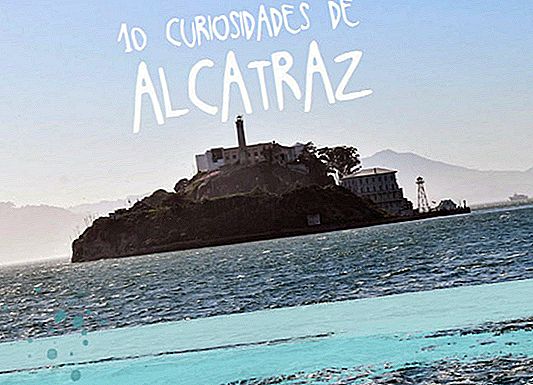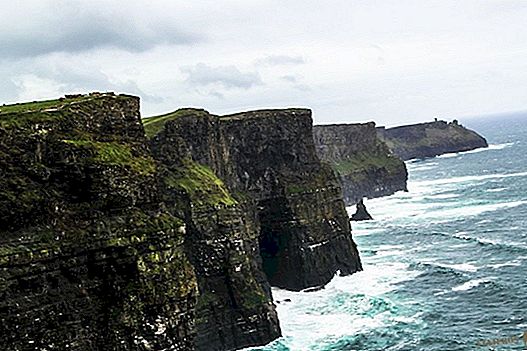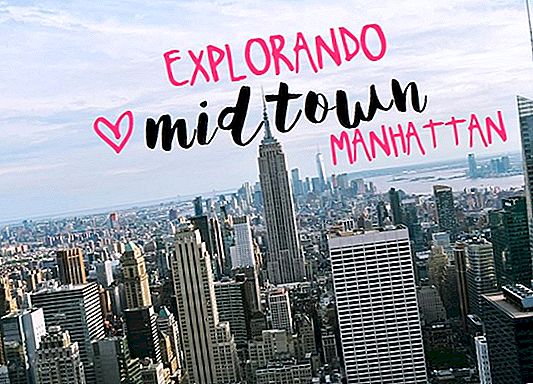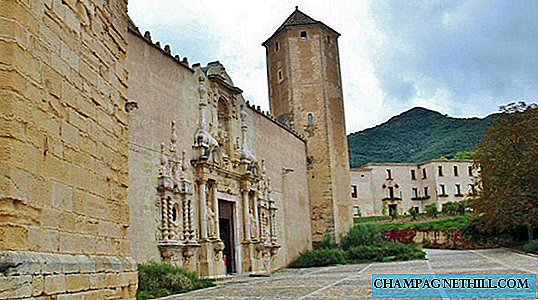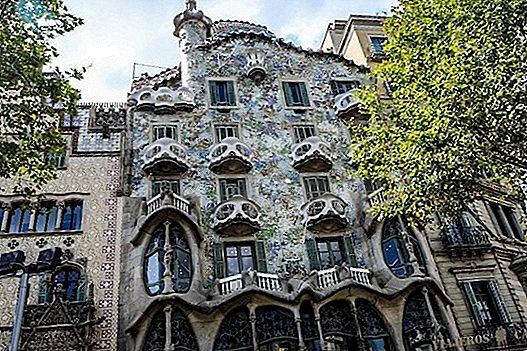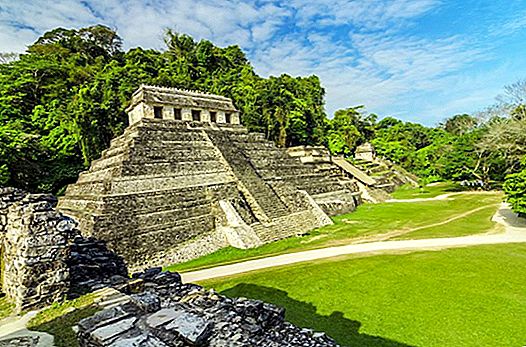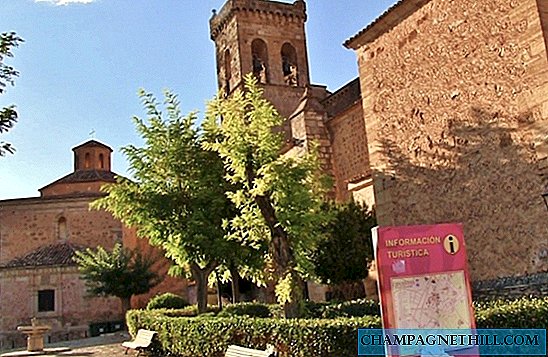
Cifuentes in the route of the Journey to the Alcarria in Guadalajara
Sure you know that Trip to the Alcarria It is one of the most famous stories of whoever Nobel Prize, Camilo José Cela.
In the narrative his journey and the adventures he lived in his visit to the natural region of the Alcarria in the Guadalajara province.
In recent months he had already made some getaway to corners of that province very close to Madrid, specifically to the black towns and to the historicalSigüenza.
And now, on the occasion of the 70th anniversary of the publication of said travel book I had the opportunity to participate in a trip that emulated the route that in the spring of 1946 he made Cela.
Then I will tell you this route during a weekend visiting several of the famous enclaves trip to the Alcarria of Cela.
Torija
Just like he did Camilo José Cela, we started our trip in the city of Guadalajara, and from there we advanced to our first stop, which we made in the town of Torija, more specifically in his castle.

Torija Castle on the route of the Journey to Alcarria in Guadalajara
Within it we could see a museum dedicated to the trip of the Nobel Prize.
He torija castle It has its origin in the time of the Romans, because they already built a watchtower from which they could control all the surrounding territories against possible enemy attacks.
At museum dedicated to the Journey to the Alcarria we can find original pieces that describes Cela in his book, in addition to a facsimile that he gave to his friend Jesus Campoamor which he donated to deputation And now he is in the museum.
Camilo José Cela agreed to donate to the deputation a collection of different editions of his book to be exposed in exchange for his friend Jesus He was responsible for founding and managing it, which helped the deputation.

Museum of the Journey to the Alcarria de Cela in Torija in Guadalajara
Also within Torija museum you will find a summary of the natural heritage of the Guadalajara province.
Brihuega
Continuing our trip we arrive at the town of Brihuega, where we met the gardens of the Royal Cloth Factory with great tradition and importance for the area, from where we could see a beautiful view of the town.
Within the same town we find the San Felipe church dating from the first quarter of the twelfth century and that was used during the Civil war as a warehouse or barn; in 1943 the roof collapsed, which forced its restoration.
He Nobel he tells us in his book how he came to town and rested in the Las Heras Park before entering the Chain gate, which is one of the remains of the medieval wall currently restored.

Brihuega on the route of the Journey to Alcarria in Guadalajara
This door gave way to the Fountain of the Twelve Pipes of the eighteenth century in whose back was the laundry of the blanquina that was part of the policy of water supply and creation of sources of illustration.
As a curiosity, a legend tells that married women who drink from the twelve pipes find a partner.
Although one of the things that surprised us the most in Brihuega is the visit to the Arab Caves (entry, 2 euros) found in the Coso Square, in which markets were held since the thirteenth century.
Built in the 10th and 11th centuries, these caves are galleries of a total of eight kilometers that were used as a warehouse for the city, but above all to protect themselves from attacks, in addition to having access to the outside of the city walls.

Civic on the route of the Journey to Alcarria in Guadalajara
We could not leave Brihuega without knowing the church of Santa María de la Peña and its north cover that was altered in the 16th century with the Cardinal Tavera, which points more to the Gothic than the Romanesque after its reconstruction.
Civic
On the way to Masegoso de Tajuña we made a brief stop at Civic, an old abandoned village halfway between the two villages.
This village is excavated in the rock, in addition to having natural sources that flow from the rock forming beautiful waterfalls that pour into the Tajuña river.
Masegoso of Tajuña
In this town, the first thing we did was to regain strength in what I think was the only restaurant in the small town of Maseous, Las Vegas, which is really worth recommending for the tasty lamb we tasted.

Pastor and Labrador Museum in Masegoso de Tajuña
In Masegoso of Tajuña we made a quick visit to Shepherd and Labrador Museum, where you could see what were the tillage techniques used in the area.
This museum recreates a typical farmhouse where they teach you from the rooms of the kitchens, where people, in addition to eating, used it as an area in which to heat and hang and dry the slaughter products, to the utensils with which they collected the crops and elaborated the products of the field.
Cifuentes
In the next stage on the route of the trip to the Alcarria from Camilo José Cela we meet the people of Cifuentes, which takes its name from the river that crosses the town.

Cifuentes in the route of the Journey to the Alcarria in Guadalajara
This town is crowned, to one side, by the Church of the Savior of the thirteenth century, and to the other, the Cifuentes Castle, which was the house of the cwaves of Cifuentes.
Although the authentic jewel of the people is the Santiago coverin the Church of the Savior, which mixes different architectural styles such as Gothic, Romanesque, Renaissance and Baroque.
The locality passed by Jacobean Wool Route, which is one of the oldest peninsular trade routes, road used since the end of the Middle Ages by sheep herders and honey producers to attend the fairs of Burgos and Medina del Campo.
Camilo José Cela portrayed Cifuentes as "a beautiful, cheerful town with lots of water and women with deep black eyes."

Trillo on the route of the Journey to Alcarria in Guadalajara
Trillo
The first day on our route from Trip to the Alcarria ends with the visit of the town of Trillo where we spent the night in the resort town.
The next day we start the day with the visit of its spectacular waterfalls.
Then we skip some of the stages of the book by following the route by car, from where we see the known Viana's Tits which are two twin mountains that preside over the area.
After passing the town of The door to get to Monsalud Monastery.

Monastery of Monsalud on the route of the Journey to the Alcarria
Monsalud Monastery
The monastery is located in the town of Corcoles, and it is a place full of history, as our guides told us that filled the current ruins with life.
He Monastery of Santa María de Monsalud It is also located in the aforementioned Way of Santiago de la Lana, so in the past it was an area of commercial importance.
The monastery had rooms for pilgrims and other exclusive religious services for the monks who lived there.
The Virgin of Monsalud It was one of the virgins that had more miracles in the eighteenth century with attributions to health, love and the demonized.
We also visited the exhibition «Witches of the Alcarria»And the caves of the old monastery used in their day as cellars.
The entrance with guided tour It costs 5 euros and gives you access to visit the Roman site of Ercávica In addition to the remains of the monastery. Here you can check the Monsalud Monastery schedules.

Recópolis on the route of the Journey to the Alcarria
Archaeological Park of Recópolis in Zorita de Canes
Following our path we arrive at the town of Zorita de Canes where we made three small visits within the archaeological park of Recópolis.
We start with him interpretation Center,where we could see a small museum where we learned the history of the area and how the Visigothic civilization evolved and later in it.
Then we go up the hillside until we reach the top where we find the archaeological remains of Recópolis.
It is a ancient Visigoth city in which we saw the sites of the excavations carried out, which so far have only revealed only 10 percent of the area that the city would occupy in its day.

Zorita de los Canes Castle on the route of the Journey to the Alcarria
It should be noted that in Recópolis no remains of previous civilizations have been found, just a few Roman remains in the surroundings. Only three cultures passed, between the sixth and seventh centuries the Visigoths; until the ninth century the Muslims; and from there, the Christians.
The city is created around two intersecting streets, which generated all the activity. A wall delimited the city, and crowning the area, a church with three naves.
In the fourteenth century the city was completely abandoned and in the XV on the remains of the Christian church a hermitage is built in honor of the Virgin of the Olive.
The last visit we made within the town was that of Zorita de los Canes Castle.

Pastrana on the route of the Journey to the Alcarria in Guadaljara
Located at the top of a hill, it was important for its strategic characteristics as it is flanked ahead by the Taj riveror and behind by the Badujo stream.
This castle passed through several hands since it was in an area of great importance in the wars between Arabs and Christians during the time of the reconquest.
Pastrana
We finish our own Trip to the Alcarria In the town of Pastrana, where in addition to walking through its medieval streets we visit its church-collegiate church.
Of this last one it is possible to emphasize the altarpiece dedicated to ten women holy martyrs of the third century, without forgetting the Tabernacle of the Assumption, virgin to which the church is dedicated.
But, no doubt, in the Visit of the Collegiate Church of Pastrana one of the things that impressed us most was the exhibition of «Pastrana Tapestries», Flemish Gothic style of the 10th century, considered one of the most important in the world for its compositional complexity that narrates contemporary events.

Pastrana tapestries on the route of the Journey to the Alcarria
Sculptural, pictorial and goldsmith's pieces of authors of the time are also exhibited, not forgetting the beautiful visited crypt that the collegiate has.


